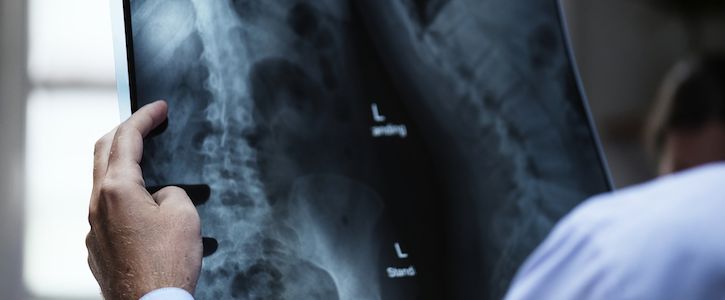Will AI Replace the Radiologist?
Why this data scientist says healthcare must embrace AI.

It seems every article on machine learning (ML) and artificial intelligence (AI) sounds the alarm: Our jobs are being automated away. The examples these pieces concoct are numerous: Driving professions will be extinct as Tesla builds automated trucks and cars to replace truckers and taxi drivers; pilots will be replaced by autopilot; and even doctors aren’t safe from these alarmist predictions, inevitably to be replaced by robots too.
>> LISTEN: The Artificial Intelligence Question
In 2015, radiology residency applications were at their lowest in a decade, and if we’re to believe the headlines, maybe that’s a good thing. Won’t they just be replaced by AI too? Or is this just more overinflated tech hype?
As a data scientist, let me give you a short and sweet answer: Radiologists will not be replaced by AI. The longer answer? AI will enhance their work.
What AI Really Does
One of the oft-cited premises of AI is its replacement of humans. But the presence of the “I” in “AI” isn’t any different from the “I” in “BI” (business intelligence). Simply because deep learning and neural networks are patterned after the human brain doesn’t equate them to human intelligence or even Artificial General Intelligence (AGI)/human cognitive abilities.
In fact, AI systems are not generalists — they’re good at very specific things. Google Cloud Chief Decision Scientist Cassie Kozyrkov classifies most of what machine learning does as “thing-labeling.” Advanced ML algorithms can label data better than humans do, meaning ML/AI algorithms can detect and correctly diagnose images better than most radiologist can.
We actually see this everywhere, AI outperforming humans in medical tasks. Here are a few references:
Doctors said the coma patients would never wake. AI said they would …
AI defeats top doctors in competition
This AI outperformed 20 corporate lawyers at legal work | World …
What AI Means for Radiologists
However, diagnosing and reading medical images isn’t all that radiologists do. Radiologists are also involved in a variety of patient-facing work — ultrasounds, fluoroscopy, biopsy — and multidisciplinary work, such as serving on boards, teaching, training and reviewing.
Susan Etlinger, an industry analyst with the Altimeter Group, says, “AI tools can help physicians handle a lot more data a lot more quickly and help them prioritize. Theoretically, that could give a family physician a lot more tools in their toolbox to be able to run an initial diagnostic on somebody and then refer that person for additional treatment.”
This is a far cry from replacing the doctor entirely.
Celebrating AI
I’ve helped create advanced AI and machine learning tools to help automate processes and preach the idea of “human-assisted AI.” Applications for these tools include detecting the best student to be admitted to a business or medical school; detecting medical fraud, waste and abuse from providers; and creating scheduling systems for doctors, nurses and hospital staff members. In all these cases, the algorithms help companies deliver faster results at reduced costs, while allowing the human to focus on the most valuable areas of their work.
I’ll leave you with one thought. A calculator didn’t replace any mathematicians, Excel didn’t replace any accountants and automated ML didn’t replace any data scientists. All these tools simply enhanced the human process and make work more productive. AI is no different.
Gabriel Mohanna is director of data science at Clarity Insights, a strategic partner to the nation’s leading organizations, providing data and analytics consulting services and establishing data-driven culture changes. www.clarityinsights.com
Get the best insights in healthcare analytics directly to your inbox.
Read More About AI
How to Get Ahead of the AI Curve
Implementing AI Is Simpler Than You Think
Healthcare Orgs Less Urgent to Invest in Big Data and AI